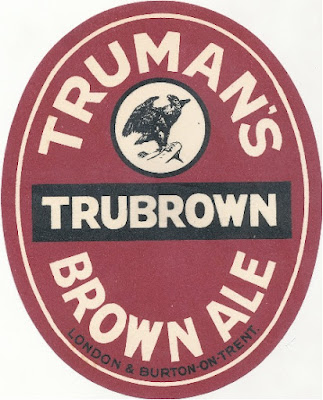Let’s turn our attention now to the ingredients in that set of London Mild Ales. And there are quite a lot of them.
Only one example – a Barclay Perkins X Ale – was 100% malt. This also highlights something else: how variable their recipes were. None of their six X Ales has the same malts. Not even the base malt is the same in all of them. One was all white malt, one all pale malt and another a mix of the two.
The most striking omission is mild malt. It doesn’t appear in any of the set. While another supposedly style-specific malt does, PA (Pale Ale) malt. Which is an odd thing to see in a Mild Ale as it was the best-quality pale malt. The same beer also contains rather a lot of amber malt. Which must have given it a very different character to the later versions.
Two of the Barclay Perkins X Ales have considerable quantities of brown malt. The colour must have been quite a bit darker than their other versions, none of which had anything darker than a tiny bit of crystal malt.
Talking of crystal malt, there’s not as much of it as you might expect. Mild Ale is one of the styles it was created for, yet only the 1887 Fullers X Ale contains a significant quantity. I can’t see what impact 1% or 2% would have in beers as big as these.
The only other malt employed was black. In a minute quantity in the 1885 Truman X Ale. The quantity is so small in must have only darkened the beer by a tiny amount.
What do the big recipe variations over a short period of time at some breweries tell me? That the style was in a state of flux. Quite surprising in a style that was so popular.
| London X Ales malts 1880 - 1899 | |||||||||
| Year | Brewer | pale malt | PA malt | brown malt | black malt | amber malt | crystal malt | white malt | total malt |
| 1880 | Barclay Perkins | 85.99% | 85.99% | ||||||
| 1886 | Barclay Perkins | 81.82% | 81.82% | ||||||
| 1886 | Barclay Perkins | 66.67% | 33.33% | 100.00% | |||||
| 1887 | Barclay Perkins | 35.22% | 2.61% | 40.43% | 78.26% | ||||
| 1890 | Barclay Perkins | 48.41% | 26.68% | 0.76% | 75.86% | ||||
| 1899 | Barclay Perkins | 69.90% | 2.18% | 72.09% | |||||
| 1881 | Whitbread | 91.84% | 91.84% | ||||||
| 1885 | Whitbread | 92.31% | 92.31% | ||||||
| 1891 | Whitbread | 95.59% | 95.59% | ||||||
| 1895 | Whitbread | 93.85% | 93.85% | ||||||
| 1898 | Whitbread | 83.33% | 83.33% | ||||||
| 1887 | Fullers | 44.42% | 24.23% | 10.10% | 78.75% | ||||
| 1893 | Fullers | 79.70% | 1.16% | 80.86% | |||||
| 1898 | Fullers | 74.40% | 74.40% | ||||||
| 1880 | Truman | 73.15% | 73.15% | ||||||
| 1885 | Truman | 85.56% | 0.18% | 85.74% | |||||
| 1890 | Truman | 86.21% | 86.21% | ||||||
| 1895 | Truman | 89.36% | 89.36% | ||||||
| Sources: | |||||||||
| Barclay Perkins brewing records held at the London Metropolitan Archives, document numbers ACC/2305/1/579, ACC/2305/1/584, ACC/2305/1/583, ACC/2305/1/586 and ACC/2305/1/593. | |||||||||
| Whitbread brewing records held at the London Metropolitan Archives, document numbers LMA/4453/D/01/047, LMA/4453/D/01/050, LMA/4453/D/01/057, LMA/4453/D/01/061 and LMA/4453/D/01/064 | |||||||||
| Fullers brewing records held at the brewery. | |||||||||
| Truman brewing records held at the London Metropolitan Archives, document numbers B/THB/C/161, B/THB/C/166, B/THB/C/171 and B/THB/C/175. | |||||||||












































































3 comments:
Is there indication why they chose corn over rice? I've seen blind taste tests which suggest at these %s the flavor difference probably wouldn't be noticed. I'm curious if they thought there was -- maybe Victorian corn had a lot more flavor than modern corn, for example. Or was it economics?
Anonymous,
probably cost. But it could have been some other quality of maize that they liked. Brewers kept coming back to after its supply was interrupted due to war.
Maybe many breweries imitate mild malt by using a mixture of pale and brown/crystal malt, which the breweries needed for there other beer styles anyway. As mild malt survived there must be a demand the malters keep producing it over the decades
Post a Comment